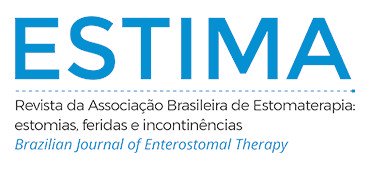Cultural adaptation and content validity of ISTAP Skin Tear Classification for Portuguese in Brazil
Palavras-chave:
Validation studies, Wounds and injuries, Methodological research in nursing, Advanced nursing practice.Resumo
Objective: To translate and culturally adapt the International Skin Tear Advisory Panel (ISTAP) Skin Tear Classification into the Portuguese language in Brazil and test the content validity of the adapted version. Methods: The cultural adaption comprised three phases: translation, evaluation by committee of judges composed of five stomatherapists (confirming the instrument content validity) and back-translation. Results: Two Brazilian Portuguese versions of the instrument were obtained after translation and analyzed by the committee, disagreements arose over several health related terms. This generated low values of the content validity index. However, the content validity was confirmed after discussion of discrepancies between the authors and some members of the judges’ committee, as well as with one of the authors of the original instrument, Dr. Kimberly LeBlanc, who also testified that validity when approving the back-translations of the adapted version to Brazilian Portuguese. Conclusion: The culturally adapted version of the ISTAP Skin Tear Classification is considered to have been obtained, with its content validity also attested. At that moment, the tests for inter and intraobserver reliability and concurrent validity are in the finalization phase, after which the instrument adapted and validated for Brazil will be made available.Downloads
Não há dados estatísticos.
Métricas
Carregando Métricas ...
Downloads
Publicado
2018-11-01
Como Citar
1.
Silva CVB da, Campanili TCGF, LeBlanc K, Baranoski S, Santos VLC de G. Cultural adaptation and content validity of ISTAP Skin Tear Classification for Portuguese in Brazil. ESTIMA [Internet]. 1º de novembro de 2018 [citado 18º de abril de 2025];16. Disponível em: https://www.revistaestima.com.br/estima/article/view/590
Edição
Seção
Artigo Original

























